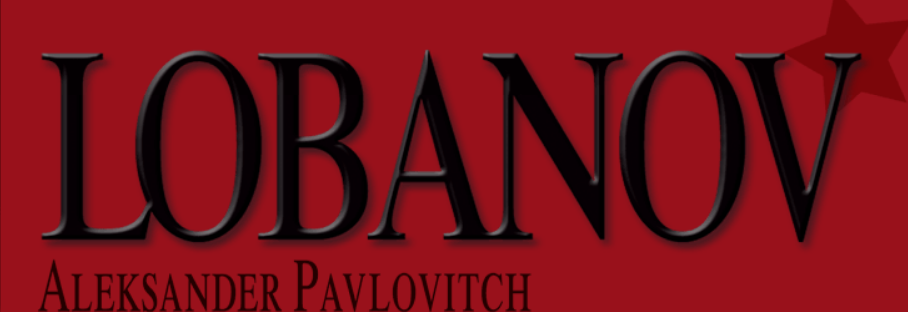For all those who agreed to participate in the publication of this book, Aleksander Lobanov is undoubtedly the emblematic figure of Russian Art brut. He is also a recent discovery, even in Russia; the life of this artist was a tragedy that echoes, point by point, the history of the USSR.
We thus conceived the ambition, together with Alain Escudier to present as many pictures as possible in order to cover Lobanov’s oeuvre. The book also allows our Russian colleagues, who know the problems associated with this creator and his place in the Russian landscape, to have their say. This is all the more interesting since their words bring to the surface the frictions and distortions which the Russian soul has had to confront and from which it is trying to emerge…
All the contributions are from friends who have been touched by or have involved this artist in various ways. Their points of view shed light on the work from different angles, providing a counterpoint to the apparently simple personality of Aleksander Lobanov. Here we must pay homage to Madeleine Lommel, whose enthusiasm when faced with the few paintings by Lobanov that we were able to exhibit at the Palais des Congrès in Paris in 2000 cannot be allowed to pass without comment. Her persistency in acquiring some of the artist’s works in order to display them at the Musée de Villeneuve d’Ascq was a determining factor. This truly remarkable conjunction unleashed the flood
of diverse influences that permitted this singular artist to find rapidly the worldwide that he undoubtedly deserves.
The book offers a series of articles, arranged in two unequal parts: the first focuses on Aleksander Lobanov’s life, with sundry reflections concerning his drawings and paintings; the second is devoted to his photographic work, produced between 1975 and 1990. Lobanov’s fascination with scrutinising his face very naturally played a part in his desire to have himself photographed. Incidentally, these would be his first steps outside the Afonino Hospital, to get to know himself better. Over the course of the years, the numerous photographs naturally became associated with popular traditions. One should note that it had become the custom at fairs to have oneself photographed in a decorative setting. The painter’s photographic ensemble provides evidence of these stages.
Nevertheless, the fact is that Lobanov’s work remains radically on the margins, at the limits of survival and of Russian popular art… Lobanov’s style is directly dependent on the rudimentary means that remained available to him. He coloured his inner world, forgotten in the vast Russian countryside. Fascinated by weapons for warfare or hunting, Lobanov draws himself, imposing himself as practically the sole actor in his work, having identified himself with the leaders of the period in an initial approach. Lobanov, at the centre of his universe, displays his “attributes”, the variations on which leave the viewer of this art unable to stop talking.
Questions arise, like the significance, in a surprising discrepancy, of the mythical Stalin, the memory of whom persisted until well after his death in 1953, as is evident from Lobanov’s first works, which date from the early 1960s. In fact these are almost exclusively dedicated to portraits of Lenin, and still more of Stalin. For nearly 40 years, Lobanov would do a number of paintings on the back of propaganda materials that throw light on life in the USSR (which became the Russian Federation on 12 June 1990). Were these magazines or posters stored for cost-saving reasons in a corner of the hospital or simply a “work of compilation” on Lobanov’s part? Right away his work eludes time and space, like an organ note reverberating, unique and solitary, in the oblast (district) of Iaroslavl!
Another question that arises concerns the models for the guns, which certainly did not come from a single source (the Ijevsk factory or Kalachnikov guns!); some even date from the late 19th century.
But the essential feature of his work remains Lobanov himself, copied, traced, more rarely accompanied by his double, whom he called Sacha, and still more rarely portrayed in triplicate. In a different register he re-interpreted historical scenes or a few women or militant girls. The one which (p. 8) is, to my opinion, the loveliest of this female representations depicts according to Vladimir Gavrilov, either his mother or the cook at Afonino; in any case, the image of beloved one.
This book deals to with of successive encounters, with exchanges – usually amicable – in which passion and interest in these alter egos affected by mental disorders pose to the present day the huge enigma of “raw” psychological violence. A singular “violence”, indeed, exerted by a radical poverty that destroys the human being himself but also those close to him. This is therefore an appeal for more research but also for more solidarity vis-à-vis these forgotten ones of our new social systems.
This book is an appeal for respect for such works and especially for their creators, by way of counterpoint to a recent sector of the market, undergoing rampant development, which snaps its fingers at the patients, of course, but often also at those responsible for them, like their family.
Dominique de Miscault
